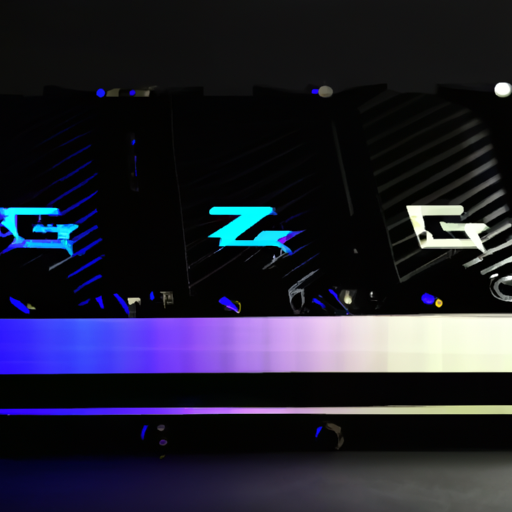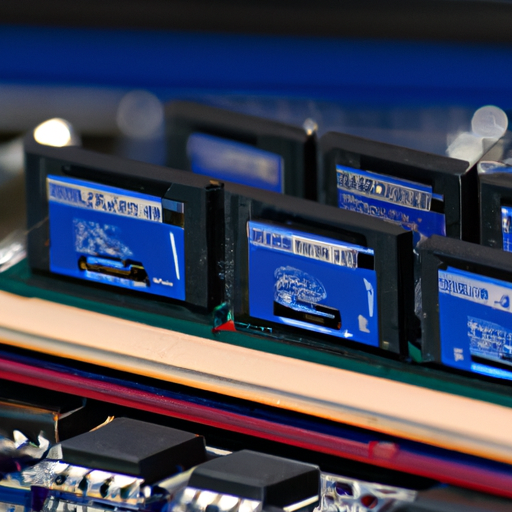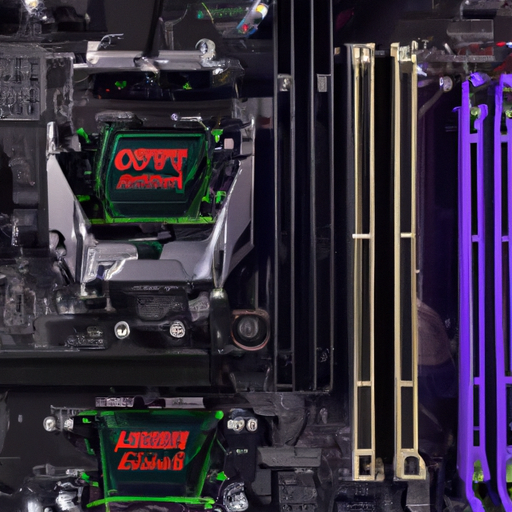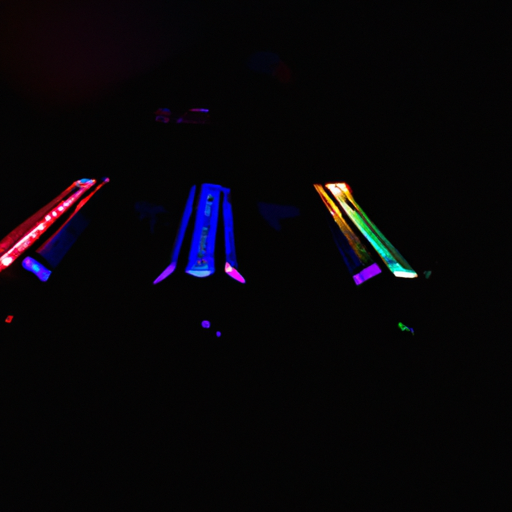Note: As an Amazon Associate we earn from qualifying purchases.
Trying out the G.SKILL Trident Z5 RGB DDR5 32GB White (2024)
Introduction
I recently upgraded my system memory with the Trident Z5 RGB series. This high-performance RAM has gotten good reviews for its aesthetics and promise of top-tier speeds. Hence I was curious to see if it would live up this in my own setup.
Specifications
| Property | Value | Property | Value |
|---|---|---|---|
| Brand | G.Skill | Computer Memory Size | 32 GB |
| RAM Memory Technology | DDR5 | Memory Speed | 6400 MT/s |
| Compatible Devices | Desktop |
Prices
Check prices of the G.SKILL Trident Z5 RGB DDR5 32GB White on:
Elegance Meets Performance: Aesthetics of the Trident Z5 RGB

When scouting for RAM that nails both looks and performance, the Trident Z5 RGB series catches the eye. Decked out in a sleek, two-tone design, it has the kind of visual flair you’d want if a stylish build is high on your agenda. The RGB lighting isn’t your run-of-the-mill flashy; it exudes a classy glow that can sync with your build’s color scheme through software support.
Let’s break down the aesthetics:
The metallic finish, available in silver, black, or white, adds a premium touch.
A black brushed-aluminum strip delivers a striking contrast.
The RGB light bar is designed for smooth, subtle lighting effects.
Its streamlined look means no bulky hardware to disrupt your build’s vibe.
Functionally, the Trident Z5 RGB doesn’t just sit pretty in your rig. It walks the talk with DDR5-6400 speeds, which is a sweet spot for enthusiasts pushing their systems. Of course, as with most high-performance RAM, you need to manually dive into the BIOS and flick on the XMP profile to get those top speeds, and that’s assuming your motherboard and CPU are up to scratch.
Now, I’ve got to be honest — not everyone needs this caliber of speed and aesthetic. If your computing is on the lighter side, the premium you pay for the Trident Z5 RGB might not translate into noticeable gains. And remember, there’s no ECC support here, so workstation users might look elsewhere.
Also, keep in mind that the default SPD speeds aren’t the numbers you see on the box. You do need to tinker to get the most out of your investment. But when you do? It’s a seamless ride with no stability issues, and having 32GB (2 x 16GB) means multitasking is a breeze.
From the get-go, the allure of the Trident Z5 RGB is clear. If you’re building a system that aims to impress and perform, these modules deliver. Sure, they’re tailored for the gaming or high-performance crowd, and that might be overkill for some, but for those who want that edge—both in speed and style—it’s right on the money. Just make sure to partner them with compatible hardware to unlock their full potential.
Plug Play and Overclock: Setting Up for Peak Performance

Getting the G.SKILL Trident Z5 RGB DDR5 32GB kit up and running on my Intel Z690/Z790 series build was a painless process. The reality is, in the world of PC building, you want components that not only perform well under pressure but also require minimal fuss to get going. Here’s how it played out:
Unbox and insert the memory modules into the available DIMM slots – straightforward and secure fit, no hiccups.
Power on the system – initially boots with the SPD speed, completely expected.
Jump into BIOS – to unlock the power of these sticks by enabling the XMP profile.
Now, the advertised speeds of DDR5-6400 are impressive, and in theory, these numbers suggest a sizeable leap in performance. However, hitting those peak speeds isn’t guaranteed; it’s highly dependent on the compatibility of your CPU and motherboard. Thankfully, my setup was fully compatible, and with XMP enabled, I witnessed the 32GB of DDR5 toss data around like it was nothing. Sure, we’re talking about CAS Latency CL32 at 1.40V, which might not be the absolute tightest timings, but in practice, it’s more than efficient for demanding gaming and multitask-heavy workflows.
Using this memory feels like you’re straddling the line between ease-of-use and enthusiast tweaking. The fact that they’re non-ECC and part of a Dual Channel Kit might deter some professional workstation builders, but for the audience targeting high performance or gaming memory, these sticks are a solid bet.
It’s crucial to articulate that the plug-play nature of the Trident Z5 is accompanied by a tangible potential for overclocking. Not only does it cater to those seeking to max out performance metrics but also keeps doors open for gamers and creators who might not yet be dabbling in overclocking but could take the leap in the future.
On the downside, my encounters weren’t without slight niggles. Not reaching the rated XMP overclock speed out of the box without BIOS adjustments could disappoint those less inclined to tinker. Furthermore, lack of ECC support might have some looking elsewhere if error-correcting code is crucial for their work.
In the end, personal experience complements the specs. This G.SKILL Trident Z5 RGB series kit has been rock-solid for me. It’s behaved admirably at rated speeds and hasn’t coughed up any compatibility or stability issues. And while overclocking headroom and the intricacies of XMP profiles may seem daunting, for those willing to tap into their BIOS, these modules are a testament to performance gains that are ripe for the picking.
Compatibility and Stability: Pairing with Z690/Z790 Chipset

Pairing the G.SKILL Trident Z5 RGB DDR5 32GB memory kit with the latest Intel Z690/Z790 Series Chipsets feels like a match made in computing heaven. Ensuring compatibility with both 12th and 13th Gen Intel Core CPUs, I was initially concerned about potential bottlenecks or compatibility issues. However, the experience has largely been smooth sailing.
Here’s a quick rundown of my key observations:
Performance: When paired with a Z690/Z790 chipset, this memory kit does not disappoint. It faithfully delivers the advertised DDR5-6400 speeds, which is a testament to its built quality and compatibility.
Stability: The system stability has been rock solid. Even after enabling XMP 3.0 and pushing for the rated overclock speeds, the Trident Z5 RGB modules remained as stable as a rock. No blue screens or unexpected system hiccups to report here.
Ease of Use: Slotting in the memory and booting up, it ran at the default SPD speeds. A quick trip to the BIOS to activate the XMP profile, and it was instantly running at peak performance.
However, it’s worth noting that your mileage with overclocking may vary. The highest attainable speeds and stability will be contingent on your specific motherboard and CPU combo. Not every Z690/Z790 motherboard might be able to hit that 6400 MT/s sweet spot, especially if you’re not running a top-tier model. But as long as you respect the limits of your individual components, you should get close to the performance edge this memory promises.
Another thing to remember is heat dissipation. High-speed memory like this can get warm, especially when overclocked. The aluminum heatspreader of the Trident Z5 RGB looks stylish and does a decent job, but make sure your case has good airflow to keep things chill.
I haven’t encountered significant drawbacks, but it’s crucial to have expectations in check. The Trident Z5 RGB shines with the latest Intel chipsets. Those still on the older platforms won’t be able to capitalize on this DDR5 kit’s full potential.
In practice, this G.SKILL memory delivers what it promises: High performance for gaming and demanding applications, with a reliable experience to boot. It’s crucial, though, to ensure that the rest of your system is on par with the memory’s capabilities for optimal performance.
Pairing the Trident Z5 RGB series with compatible DDR5 platforms has shown me the potential for overclocked performance that doesn’t compromise stability. It’s a clear reminder that selecting the right memory is just as important as the CPU or GPU for modern, high-performance computing tasks.
RGB Lighting: Customizing for Aesthetic Sync

Customizing my rig with RGB lighting isn’t just about flashy colors; it’s about syncing the aesthetic of my setup. While I was integrating the G.Skill Trident Z5 RGB DDR5 32GB memory into my desktop, I paid close attention to the RGB light bar. It’s not just decor; it helps me express my personal style through my hardware.
Here’s my quick breakdown of the RGB lighting:
Pros:
Customizable RGB lighting: It allows for personal expression and can sync with other components for a cohesive look.
Ease of control: Compatible software makes it a breeze to adjust the light show to my liking.
Aesthetic appeal: It definitely adds a level of sleek sophistication to the build.
Cons:
Potentially distracting: In some cases, too much RGB can be overstimulating, especially in darker environments.
Software dependency: You need to rely on software which, if buggy, can be a hassle to manage the lights.
One of the things I appreciate is the Trident Z’s lighting control software—or third party motherboard software integration. It makes the entire process of customizing lighting effortless. Switching between colors and effects is just a few clicks away, and syncing it with my other components was surprisingly smooth.
The RGB lighting also packs a visual punch that complements the high-speed performance of the RAM. It’s like the speed of the modules is matched by the vibrancy of the lights—they kind of signal power in a very visceral way.
But, it’s not all sunshine and rainbows. One issue with RGB lighting is that it can become a distraction. Sometimes, when I’m working late or when I need to focus on content creation, I find the lights can be a tad too much. Sure, I can turn them off or dial them down, but it would’ve been nice to have a hardware switch for quick adjustments.
Another aspect is the software reliance; you need it to get the most out of the RGB. If there’s a bug or a compatibility issue with an update, it can be more of a headache than an enhancement.
In summary, while the Trident Z5 RGB DDR5’s RGB lighting is a clear win in the style department, it’s worth considering the software reliance and potential for distraction. Yet, for me, the aesthetic sync it brings to the table makes my personal setup feel complete. These lights are more than just flair—they’re an extension of my personality, shining brightly alongside the stellar performance of the RAM itself.